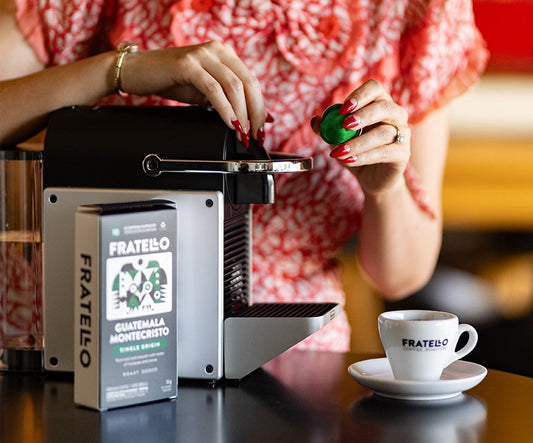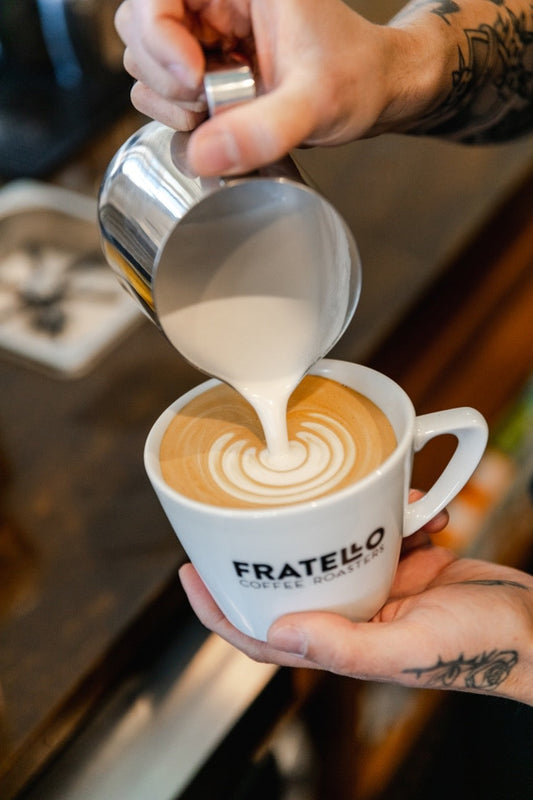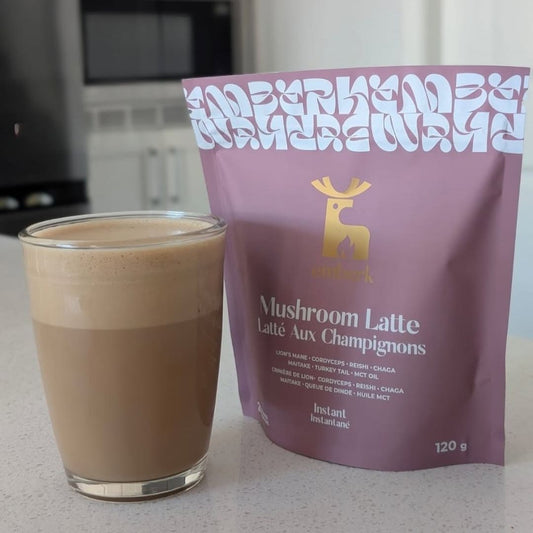The Farmer behind some of your favourite El Salvador coffees

Meet Rodrigo Dumont, a farmer from El Salvador that grows and provides some of Fratello’s favourite coffees like the El Salvador Malacara B and the El Salvador Pacamara. We interviewed Rodrigo to learn more about his farm, community and more about the behind the scenes of what it takes to fill your cup with that flavour you enjoy each morning!
Q. How often do you grow coffee? What does a season look like?
We have a coffee renovation program for the next five years that contemplates an investment of at least 15,000 new coffee plants per year. We are growing different varieties of coffees each year, from our traditional red bourbon, to our new and exciting microlots: orange and pink bourbon, mokka, and pacamara, among others.
A season includes different activities within the coffee farm:
Coffee pruning and management, which is essential for new growth and the stimulation of new foliage, which will eventually provide more crop.
Shade pruning and its efficient management provide enough light for the coffee plants to regenerate its foliage previous to the rainy season, and as it grows back, maintains a cool temperature in the farm during summer. Shade also provides further benefits:
- Organic material for the soil from fallen leaves
- Canopy for a sustainable ecosystem
- Less fertilizers required for coffee trees with more shade
Soil & Foliar Fertilization: coffee plants, like all plants,
require light, water, and soil to grow and bear fruit:
- Quantity of light is managed by shade
- Quantity of water, as of now, cannot be regulated
- And the quality of soil can be analyzed and further improved with organic and/or chemical amendments and fertilizers
- In our farms we provide our coffee plants both organic and chemical fertilizers: Pulp is used in a compost for new coffee plants, N-P-K formulas are created for specific soil types and at certain growth times of the plant for fertilization optimization and less waste
Picking and sorting is crucial to the quality of coffee. A cherry picked at its ripest will deliver a well-formed and larger bean, with higher sugar content, and thus a better cup.
Milling: the milling process is outsourced to Beneficio El Borbollon, even though it is an integral part of the value chain.
These are some of the most important activities that go on at the farm level. They are critical for coffee growth and coffee production. Without these we could not have a harvest at the end of the season.
Q. What makes for a good crop?
A good crop can be defined as producing what was expected, not having an environmental impact on the farm (e.g. some kind of plague, strong rains or draught), stable costs, and a secure space to work on.
The quality of the coffee can be established to a certain point by the hard work of the farm workers.
Q. Are there any unique techniques that you use for growing coffee?
We have a established a traditional method in Malacara B called agobio parra This technique was used in the Santa Ana volcano region more than 50 years ago and provided superior productions for bourbon varieties. The technique consists of bending the coffee trees when they are relatively young. With proper shade and coffee pruning, new trees will grow from the mother tree and provide additional production. Each season, the newer trees are bent and further trees grow to produce the new crop. The growing philosophy behind the agobio is to always have in one parra, three or four producing generations of coffee trees.
Q. Tell us a Little about daily life. What does your day look like?
In Malacara B, work on the farm starts at 7 am. Usually workers are divided by 20 or 30, supervised by a “Caporal”. There is a farm administrator called “Mandador”. During the year there are between 20 to 60 people working on non-harvest work. During the harvest the amount of workers can increase to 100 at a time. Each group has a specific activity to work on: shade pruning, coffee pruning, or fertilization for example. Lunch break is at noon: beans, rice and “chengas” or tortillas, which the farm provides as part of the work benefits. Work usually ends at 3 pm. If there is any work paid by the job, people choose to keep working and earn additional cash.
In my case, I visit Malacara B and the other two farms we administer, Piedra Pacha and Las Mercedes. At least once a week each.
Q. What kind of environment conditions are best for growing coffee?
Malacara B I would say has an ideal microclimate to grow coffee. It is at 1500 m above sea level, perfect temperature in El Salvador for quality coffee. It is in a side of the Santa Ana volcano where no wind hits the farm. It is always partially cloudy, so there is not too much sun or too little. The soil comes from volcanic rock. All great conditions for specialty coffee!
Q. How do you like to drink your coffee?
When I drink coffee I have two preferences.
When it is black coffee, I like to drink a Malacara B red Bourbon in a Chemex. Clean, round, balanced and sweet. I could drink that coffee on and on and on.
If there is a good barista around, and a good espresso machine, I like a good cortado: the perfect combination of sweet espresso and milk.






